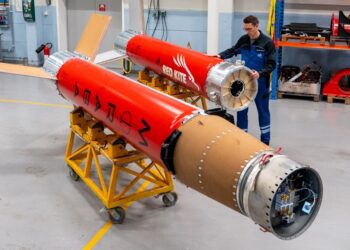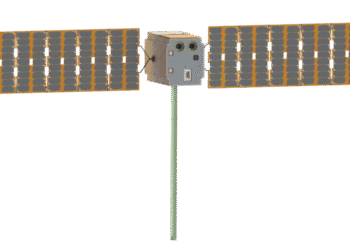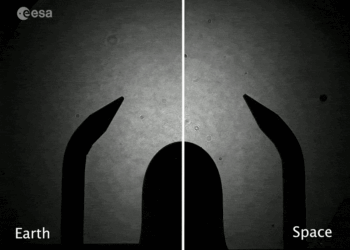NASA has conducted a new round of flight testing aimed at making Mars landings safer and more reliable. The Enhancing Parachutes by Instrumenting the Canopy, or EPIC, effort is building a high-fidelity data set to improve how engineers design and validate supersonic parachutes that slow spacecraft during the most demanding phase of entry, descent, and landing. The latest test, flown on June 4, 2025, used an air launch from an Alta X drone at NASA’s Armstrong Flight Research Center in Edwards, California.
What NASA Tested
EPIC equips a parachute canopy with embedded instrumentation to capture the forces and dynamics that drive deployment and inflation. By recording the behavior of the canopy and suspension lines from release through steady-state flight, the campaign targets the physics that are difficult to replicate on the ground and challenging to model with current simulation tools.
- Measure canopy loads and inflation dynamics during deployment.
- Validate and refine computational models of parachute behavior.
- Reduce risk for future atmospheric entry missions that rely on parachute systems.
The June flight was an early step in a planned series designed to gradually expand test conditions. While not a supersonic deployment, the air-launched profile allows researchers to isolate key parameters, compare results against predictions, and identify where model assumptions diverge from real-world behavior.
Why It Matters for Mars
Landing on Mars requires precise deceleration in a thin, variable atmosphere. Parachutes must withstand rapid inflation, fluctuating loads, and complex fluid-structure interactions. Small uncertainties in these regimes can cascade into significant design margins, added mass, or operational constraints. EPIC’s data-driven approach is intended to narrow those uncertainties, enabling more efficient parachute designs and better mission assurance for future landers, instruments, and payloads.
Improved modeling also supports a wider envelope of potential missions, including delivery of heavier systems and expanded landing site options. By anchoring simulations to flight data, engineers can more confidently project performance across different geometries, materials, and deployment conditions.
Inside the EPIC Approach
By instrumenting the canopy itself, EPIC focuses on the source of key aerodynamic and structural behaviors. The approach complements wind-tunnel, drop, and high-altitude tests by capturing transient events—such as initial inflation and canopy breathing—that strongly influence loads and stability. The resulting data set informs design trades, materials selection, and pack-and-release strategies.
NASA’s Armstrong team used the Alta X drone to position and release the test article, providing controlled initial conditions and repeatable test points. The method offers operational efficiency, rapid turnaround between configurations, and the ability to expand to more complex trajectories in later phases.
Broader Applications and Next Steps
Beyond Mars, improved parachute modeling can benefit missions across the solar system where atmospheric entry is required. The research could also inform high-speed aerodynamic applications in other sectors that prioritize safety and performance.
- Analyze flight data to quantify model agreement and identify gaps.
- Update computational tools and design methodologies based on flight results.
- Plan additional flight campaigns to incrementally increase complexity and test new configurations.
As EPIC progresses, NASA aims to translate flight-derived insights into practical design guidance for future exploration missions. Additional details and the latest imagery are available in the NASA image article: EPIC Research Can Help Mars Missions.






















